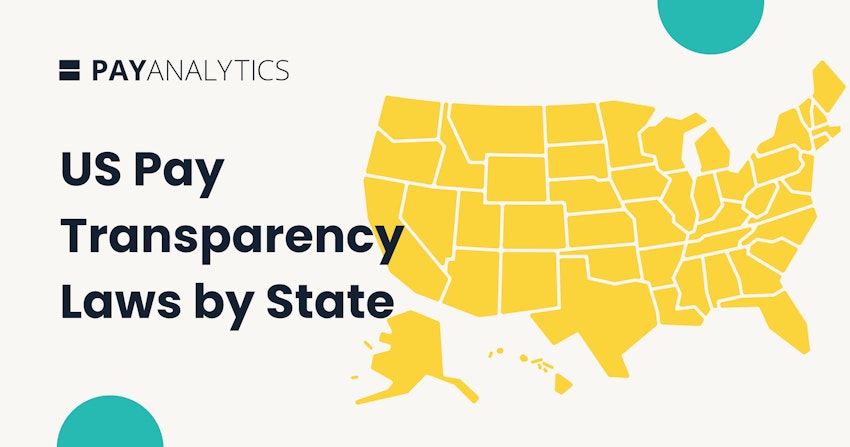
Years in the making, the EU Pay Transparency Directive was signed into law in spring of 2023. This law is wide-reaching and will change the way that organizations measure, correct, and report on gender pay gaps. This Directive should be reflected in national laws in the next three years.
There are a number of good, substantial resources about the Directive. But you can think of this article as a quick-start guide. It’ll give you the basics about the Directive, its requirements, and who it affects. However, we strongly recommend getting the full “user manual” experience by consulting other resources (including our own more detailed e-book) as you start to prepare for the Directive.
What is the EU Pay Transparency Directive?
The EU Pay Transparency Directive is an ambitious piece of legislation designed to make sure that workers of all genders receive equal pay for work of equal value. It protects employees from direct and indirect discrimination caused by gender bias. The Directive covers two main areas: pay transparency and pay equity.
What are the key requirements of the EU Pay Transparency Directive?
Key pay transparency requirements
The pay transparency requirements relate to the way employers and employees communicate about pay and the information that employers are obligated to provide, either up front or on request.
- Employers must inform applicants of the starting pay or pay range, either in the job posting or before the interview.
- Employers are not allowed to ask candidates about their pay history.
- On request, employers must provide employees with information about pay ranges for categories of workers doing the same work or work of equal value.
- Employers’ decisions about employees’ career progression and pay levels need to be based on specific, gender-neutral criteria that employees are allowed to review.
- Employees are allowed to talk about their pay.
- If an employee asks for it, the employer must give them a comparison between their pay and the pay of other comparable employees. Specifically, this includes the employee’s pay and the average pay level (broken down by gender) for the category of workers doing the same work or work of equal value.
How do you define “categories of workers doing the same work or work of equal value”?
The principle of equal pay for equal work is fairly simple – it means that employees doing the same work should be paid equally, regardless of gender or any other demographic factors. But what if two workers (say, a customer service rep and a maintenance worker) don’t have the same job, but contribute the same value to the company? Those workers should be paid equally too, and that would be equal pay for work of equal value.
To protect against pay discrimination, these categories of workers must be defined using objective and non-arbitrary (bona fide) criteria. The criteria should be based on skills, effort, responsibility, working conditions, and any other elements unique to the job. In the next few years, EU member states are expected to issue more specific guidance about how to define worker categories and clarify pay structures.
Key pay equity and gender pay gap reporting requirements
The Directive’s pay equity requirements are linked to how employers measure and report their pay gaps. Here is the big pay reporting requirement:
- Employers must measure and publish specific metrics showing the pay gap between workers, by gender, in each category. (See the previous section for info on how categories are defined.) When measuring this gap, employers can account for gender-neutral criteria like performance and experience.
- The specific gender pay gap reporting requirements are:
- the gender pay gap;
- the gender pay gap in complementary or variable components;
- the median gender pay gap;
- the median gender pay gap in complementary or variable components;
- the proportion of female and male workers receiving complementary or variable components, broken down by gender;
- the proportion of female and male workers in each quartile pay band, broken down by gender;
- the gender pay gap between workers by categories of workers broken down by ordinary basic salary and complementary or variable components;
- the proportion of workers who benefited from a pay rise following their return from maternity leave, paternity leave, parental leave, and carers’ leave broken down by gender; and
- the average pay levels by category of workers broken down by gender.
There are also some other requirements related to pay equity:
- Employees have the right to see their employers’ pay gap information.
- After accounting for objective, gender-neutral factors, the gender pay gap should be below 5%.
- In the event of a pay dispute, employers bear the burden of proof. In other words, the employer must be able to show why the employee’s pay is what it is.
What happens if the pay gap is 5% or more?
If the pay gap (after accounting for objective factors) is at or over 5% in any category of workers, an employer has two choices.
- They can correct the pay gap within six months after publishing their measurements.
or
- They can perform a pay assessment, then create a gender action plan based on it. The plan should outline how the company is going to remedy the situation in a reasonable period, in collaboration with worker representatives. Further reports may be required. Assessments performed in this way are called joint pay assessments.
What if an EU member state already has its own pay transparency and pay equity reporting requirements?
What actually happens will vary from nation to nation. The pay transparency directive will be the bare minimum requirement for every EU member state, but the directive does allow each member state to set its own additional requirements. Importantly, if a member state already has laws in effect and those laws are more favorable to employees than those outlined by the Directive, the Directive cannot be used to reduce existing rights set out in national law.
Who needs to comply with the Directive?
The law applies to all EU companies with 100 or more employees. This includes part-time employees and contract workers. Member states may make reporting on pay mandatory for organizations with fewer than 100 workers.
Recommended reading
To give a little more information, we’ve created a short e-book on the EU Pay Transparency Directive. Download your copy to understand the key components of the Directive and how they apply to your organization.
As you continue preparing for the directive, we would highly recommend doing a full read of the Directive itself. To see current laws in place in the EU and throughout the world, visit our local resources page.
The information on this page is not intended to serve and does not serve as legal advice. All of the content, information, and material in this article are only for general informational use. Readers are advised that this information, legal or otherwise, may not be up-to-date.





